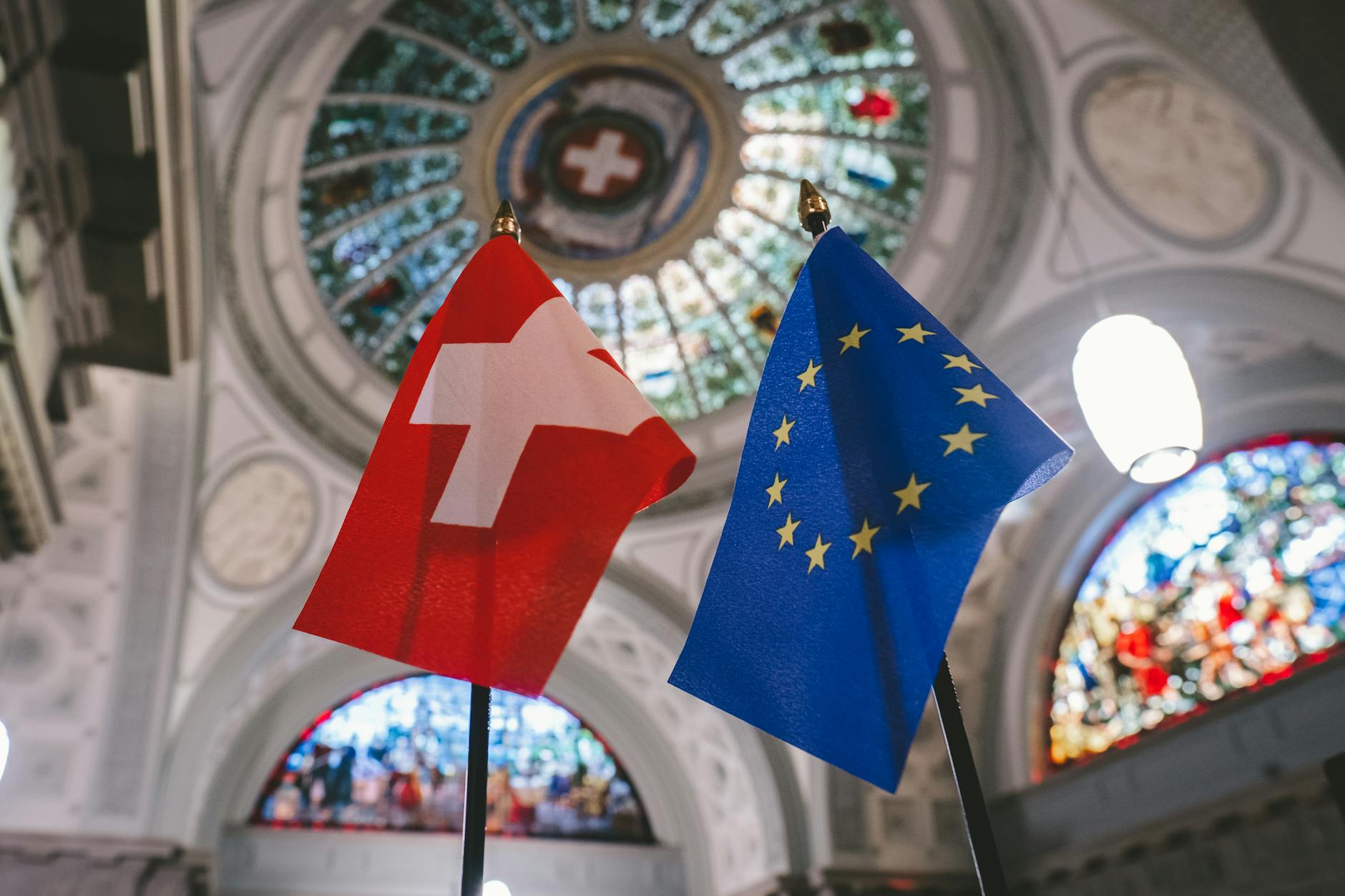A Nation’s Plea: Thousands Rally Demanding Hostage Release Amidst Deepening National Concerns
Nationwide demonstrations highlight escalating public pressure for the return of hostages and address broader societal anxieties.
Tel Aviv, Israel – A profound sense of urgency and a unified demand for action permeated the streets of Israel this past weekend, as hundreds of thousands of citizens participated in nationwide rallies, culminating in a large evening demonstration in Tel Aviv. The protests, organized following a national day of public engagement, underscored a growing public clamor for the release of Israeli hostages held captive, while also reflecting a broader spectrum of national concerns and anxieties.
The sheer scale of the turnout, described by organizers as the largest in recent memory, signals a significant shift in public sentiment and a direct challenge to policymakers. Families of hostages, their supporters, and a diverse cross-section of Israeli society converged to express their unwavering commitment to securing the safe return of loved ones and to advocate for a national strategy that prioritizes this objective. The demonstrations were not merely a display of solidarity but a potent expression of collective grief, frustration, and an unyielding hope for resolution.
While the immediate focus of these gatherings was the plight of the hostages, the underlying currents of the protests also touched upon the broader implications for Israel’s security, its societal cohesion, and its international standing. The days of protest served as a stark reminder of the deep emotional toll the ongoing crisis has taken on individuals and communities across the nation.
Context & Background
The current wave of national protests stems from the prolonged captivity of Israelis, a situation that has profoundly impacted the nation’s psyche since the initial events that led to the current crisis. The precise number of hostages and their conditions remain a subject of intense concern, with families and advocacy groups working tirelessly to bring attention to their plight and to exert pressure for their release.
This recent surge in demonstrations follows a period of significant political and military developments, the specifics of which have been widely reported and debated. The emotional weight of the hostage situation has been a constant presence in Israeli public discourse, often overshadowing other critical national issues. However, the recent rallies suggest a growing public demand for a more decisive and effective national response, encompassing not only humanitarian concerns but also strategic considerations.
The organization of these nationwide events reflects a growing consensus among various segments of Israeli society regarding the urgency of the hostage situation. While the specific political affiliations and motivations of participants may vary, the overarching message of unity and demand for action is clear. The rallies have become a focal point for national conversation, drawing attention to the human cost of the ongoing conflict and the desperate hope for the return of those held captive.
The historical context of hostage situations in the region adds another layer of complexity. Past events and their resolutions, or lack thereof, inform the current public perception and expectations. Understanding these historical precedents is crucial to grasping the depth of emotion and the unwavering determination displayed by the protesters.
In-Depth Analysis
The nationwide rallies represent a complex interplay of emotional urgency, political pressure, and societal solidarity. The sheer volume of participants suggests that the issue of hostage release has transcended partisan divides, uniting a broad spectrum of the Israeli population in a common cause. This unified front poses a significant challenge to government decision-making, demanding a response that acknowledges the deep public sentiment.
One of the primary drivers of the protests is the immense emotional toll on the families of the hostages. For them, each day without news is a period of agonizing uncertainty. The rallies provide a platform for these families to voice their pain, advocate for their loved ones, and connect with a supportive public. The visual presence of thousands of people holding signs and chanting slogans amplifying their calls serves as a powerful testament to their unwavering commitment.
Beyond the immediate humanitarian concern, the hostage situation also carries significant implications for Israel’s national security and its strategic positioning. Public demonstrations of this magnitude can influence diplomatic efforts and international perceptions. The government faces the delicate task of balancing the imperative to secure the release of hostages with broader security considerations and the long-term implications for regional stability.
The organization of these rallies, often driven by grassroots movements and supported by established advocacy groups, highlights the agency of civil society in shaping national discourse. The ability to mobilize hundreds of thousands of people demonstrates a potent force for change and accountability. The use of social media and traditional media channels by these groups has been instrumental in raising awareness and galvanizing public support.
Furthermore, the protests can be seen as a reflection of a broader societal reckoning with the ongoing challenges facing Israel. While the hostage crisis is a primary catalyst, the underlying concerns may also encompass anxieties about the future, the perceived effectiveness of national leadership, and the long-term impact of regional conflicts on daily life.
The economic dimension of the protests, particularly the reported involvement of labor strikes alongside demonstrations, suggests a willingness to escalate pressure through various means. Such actions, while disruptive, underscore the depth of public frustration and the determination to achieve a tangible outcome. The alignment of different societal sectors in advocating for a common cause amplifies the impact of these protests.
Academic and policy experts have weighed in on the multifaceted nature of the crisis, offering diverse perspectives on potential solutions and the broader geopolitical context. These analyses often highlight the intricate diplomatic maneuvers, the security considerations, and the ethical dilemmas involved in resolving hostage situations, particularly within a volatile regional environment. Israel Hayom has provided extensive coverage on the national mood and the impact of these events on public discourse.
The role of international diplomacy in any resolution remains a critical factor. The ongoing efforts by various international actors to mediate or facilitate negotiations are closely watched by the Israeli public. The success or failure of these diplomatic initiatives often influences the intensity of public pressure and the level of trust in government responses.
The media coverage of these rallies, as exemplified by reports from institutions like The New York Times, provides valuable insights into the scale and sentiment of the demonstrations. These reports often include interviews with participants, organizers, and officials, offering a comprehensive view of the events and their underlying significance. The New York Times article detailing the nationwide rallies serves as a key reference point for understanding the scope of public engagement.
In-Depth Analysis (Continued)
The sustained public outcry, amplified by these large-scale demonstrations, puts immense pressure on the Israeli government to prioritize and expedite efforts to secure the release of hostages. This pressure is not merely symbolic; it directly impacts political calculations and strategic decision-making. The government’s response, or perceived lack thereof, is under constant scrutiny by a mobilized and deeply concerned populace.
Families of hostages have become powerful advocates, utilizing media platforms and public forums to share their personal stories and maintain the visibility of their loved ones. Their resilience and determination in the face of unimaginable hardship have resonated deeply with the public, fostering a sense of shared responsibility and empathy. Organizations like Galgalatz, a popular radio station, often feature updates and interviews related to the hostage situation, further amplifying public awareness.
The strategic implications extend beyond the immediate return of individuals. The perceived success or failure of the government in addressing this crisis can shape public trust in its overall capacity to ensure national security. This can have ripple effects on broader political stability and public confidence in leadership.
Moreover, the international community’s involvement and response to the hostage crisis are closely monitored. Diplomatic efforts, humanitarian appeals, and the stance of global powers can significantly influence the dynamics of negotiations and the pressure applied to all parties involved. The role of international organizations, such as the United Nations, in advocating for the release of hostages and ensuring humanitarian treatment is often a point of discussion and expectation among protesters.
The economic impact of protracted conflict and the associated national anxieties can also be significant. Reports on labor strikes accompanying some of the demonstrations suggest a willingness among certain sectors of the population to employ various forms of protest to exert pressure. This multifaceted approach to activism underscores the depth of public engagement and the desire for concrete action.
Analyzing the motivations of the protesters reveals a spectrum of concerns. While the primary objective is the safe return of hostages, participants may also be expressing frustration with government policies, a desire for greater transparency, or a broader concern for the nation’s future in a complex regional landscape. Understanding these underlying sentiments is crucial for a comprehensive analysis of the protests’ impact.
The media’s role in framing these events is also a critical aspect. Different news outlets may emphasize different angles, leading to varied public perceptions. A balanced reporting approach, which acknowledges the emotional intensity while providing factual context and diverse perspectives, is essential for a well-informed public. Coverage from outlets like Haaretz often provides critical analysis of government policies and societal responses.
The legal and ethical dimensions of hostage situations are also frequently debated. International law regarding the treatment of hostages and the responsibilities of states in securing the release of their citizens are often invoked in public discourse. Adherence to international humanitarian law is a key concern for many advocating for the hostages.
Pros and Cons
The nationwide rallies advocating for the release of hostages present both potential benefits and drawbacks in their impact on the national agenda and public discourse.
Pros:
- Amplified Public Pressure: The sheer scale of the demonstrations ensures that the plight of the hostages remains at the forefront of national and international attention, increasing pressure on decision-makers to find a resolution.
- Demonstration of National Unity: The widespread participation across different demographics and regions highlights a collective commitment to the safe return of hostages, fostering a sense of solidarity and shared purpose.
- Support for Hostage Families: The rallies provide crucial emotional and moral support to the families of those held captive, alleviating some of the isolation and demonstrating that they are not alone in their struggle.
- Increased Transparency and Accountability: Public outcry can compel greater transparency from the government regarding ongoing efforts and negotiations, fostering a demand for accountability in addressing the crisis.
- Advocacy for Humanitarian Concerns: The protests serve as a powerful voice for humanitarian principles, emphasizing the moral imperative to secure the release of individuals and ensure their well-being.
- Potential for Diplomatic Leverage: A strong, unified public demand can strengthen the government’s hand in diplomatic negotiations, signaling a resolute national will to achieve the return of hostages.
Cons:
- Risk of Escalation or Provocation: Highly emotional demonstrations, if not managed carefully, could inadvertently create conditions that complicate delicate negotiations or provoke unintended consequences from adversaries.
- Economic Disruption: Associated actions, such as labor strikes, while serving as a pressure tactic, can lead to economic disruptions that affect the wider population and may create internal divisions.
- Potential for Political Polarization: While aiming for unity, the sensitive nature of the issue could be exploited by political factions, leading to increased polarization rather than cohesive action.
- Unrealistic Expectations: The intensity of public demand might create expectations for quick or easily achievable solutions, potentially leading to disillusionment if the resolution process is protracted or complex.
- Distraction from Other Critical Issues: While the hostage crisis is paramount, an overemphasis on it in public discourse might inadvertently sideline other pressing national concerns requiring attention and resources.
- Exploitation by Adversaries: External actors might attempt to exploit the public sentiment and demonstrations for their own narrative or strategic advantage, potentially misrepresenting the motives or impact of the protests.
Key Takeaways
- Hundreds of thousands of Israelis participated in nationwide rallies, with a significant demonstration in Tel Aviv, to call for the release of hostages.
- The protests reflect a deep societal concern and a demand for decisive government action regarding the ongoing captivity of Israelis.
- The scale of the demonstrations indicates a broad base of public support and a unifying effect across different segments of society.
- Families of hostages are at the forefront of these advocacy efforts, drawing strength and support from the widespread public engagement.
- The situation highlights the complex interplay between humanitarian concerns, national security, and diplomatic efforts.
- Labor strikes have been reported in conjunction with some protests, indicating a willingness to employ various forms of public pressure.
- The media plays a crucial role in shaping public perception and disseminating information about the rallies and the broader crisis.
- International involvement and diplomatic efforts are critical factors in any potential resolution.
Future Outlook
The future trajectory of the hostage situation and the associated public demonstrations will likely be shaped by several key factors. The ongoing diplomatic efforts, both internal and international, will play a pivotal role in determining the pace and nature of any potential breakthroughs. The willingness of all parties to engage in constructive dialogue and to make concessions will be critical.
Public sentiment, as evidenced by the massive turnout at recent rallies, is unlikely to dissipate quickly. The continued advocacy by families and support groups, coupled with the emotional resonance of the issue, suggests that sustained pressure will remain a defining characteristic of the national landscape. The government will likely face ongoing demands for transparency and progress.
The evolving geopolitical context in the region will also inevitably influence the situation. Shifts in regional alliances, the actions of other state and non-state actors, and broader international security concerns could all have an impact on the dynamics surrounding the hostages.
Furthermore, the effectiveness of different forms of protest and advocacy, including further demonstrations, potential labor actions, and media campaigns, will continue to be tested. The ability of these movements to maintain momentum and to adapt their strategies in response to developments will be crucial in keeping the issue at the forefront.
The long-term implications for Israeli society are also significant. The experience of having citizens held captive, and the collective response to it, will likely leave a lasting imprint on national identity, resilience, and the relationship between the public and its leadership. The government’s success in navigating this crisis will undoubtedly influence public trust and confidence in its ability to manage future challenges.
Academic and policy circles will continue to analyze the strategic lessons learned from this period, examining the effectiveness of various diplomatic and security approaches. Insights from organizations like the Institute for National Security Studies (INSS) often provide valuable analysis of the strategic landscape and potential policy implications.
Ultimately, the future outlook is contingent on a complex interplay of political will, diplomatic success, and the sustained commitment of a nation united in its hope for the safe return of its people. The current wave of demonstrations is a clear indication that the urgency of this matter is far from abating.
Call to Action
The widespread public engagement exemplified by these nationwide rallies calls for a multifaceted approach to addressing the complex challenge of hostage release. For citizens, continued peaceful advocacy, staying informed through credible sources, and supporting organizations dedicated to the cause remain vital. Engaging in respectful dialogue and maintaining a focus on the humanitarian imperative are crucial aspects of sustained public involvement.
For government representatives and policymakers, the message from the streets is clear: the release of hostages is a paramount priority that demands unwavering attention and the most effective diplomatic and strategic efforts. A commitment to transparency with the public regarding ongoing actions and challenges, while safeguarding sensitive operational details, is essential for maintaining public trust.
International partners are encouraged to continue their diplomatic engagement and to leverage their influence to facilitate the safe return of all hostages. Upholding international humanitarian law and advocating for the humane treatment of captives are critical responsibilities shared by the global community.
Media organizations are called upon to continue providing comprehensive and balanced reporting, ensuring that the human stories of the hostages and their families are amplified, while also offering nuanced analysis of the political and security complexities involved. Accessing reports from respected news outlets, such as the initial report from The New York Times, is instrumental in understanding the full scope of events.
Academic institutions and think tanks are encouraged to continue their vital work in providing critical analysis, exploring potential solutions, and informing public discourse with evidence-based research. Resources from organizations like the Beitini forum, which focuses on national issues, can offer valuable perspectives.
In the face of such profound national concern, a collective commitment to action, informed by empathy and a dedication to resolution, is paramount. The hope for the safe return of every individual held captive remains the guiding principle for a nation that has demonstrated its profound unity and resolve.









